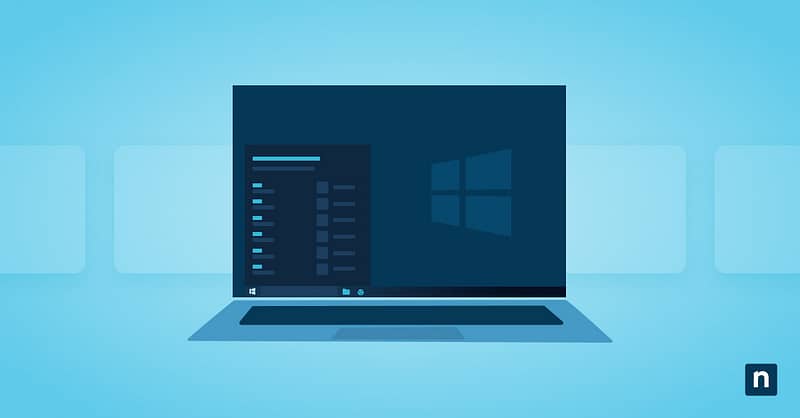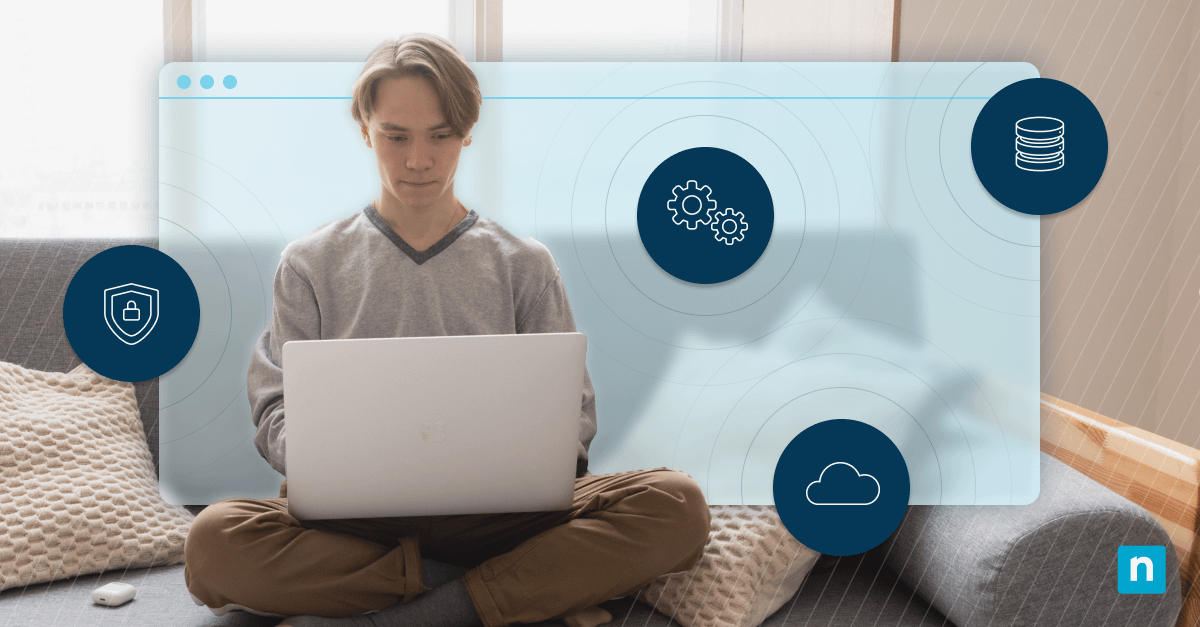Windows 10 Home works for basic tasks but struggles with heavy workloads like data analysis or 3D rendering. In contrast, Windows 10 Pro for Workstations has specialized tools that help you complete challenging tasks, like ReFS or Resilient File System (for scalable, reliable storage) and SMB Direct (for faster networking). It also supports workstation-grade hardware.
If you need power for complex projects, upgrading unlocks these capabilities. This guide covers upgrading from Windows 10 Home to Pro for Workstations, helping you learn manual steps for individuals or automated tools for IT teams.
Migrating devices from Windows 10 Home to Windows 10 Pro for Workstations
Before proceeding, ensure your system meets Microsoft’s requirements and limitations before upgrading.
Here’s what you’ll need:
- An activated Windows 10 Home installation, authenticated and properly licensed
- A valid Windows 10 Pro for Workstations key, which is different from a standard Pro license (check your Microsoft account or Volume Licensing portal for the key)
- Administrator access, so you have full control over the device to make system modifications
- An Internet connection for activation, driver updates, and troubleshooting licensing errors.
Optional IT tools like PowerShell, DISM, or the Volume Activation Management Tool (VAMT) can also help streamline bulk upgrades.
Limitations
- No direct upgrade path: You must first update Windows 10 Home to Pro, then to Pro for Workstations (unless using a special SKU-switching key).
- Hardware compatibility: Features like ReFS or SMB Direct require specific hardware (e.g., RDMA-enabled NICs, NVDIMM-N modules).
- Licensing costs: Pro for Workstations is pricier than standard Pro, so only upgrade if you need its advanced features.
Method 1: Manual upgrade via Settings
This method is the simplest way to switch from Windows 10 Home to Pro for Workstations. Here are the two stages you can do:
Step 1: Upgrade from Windows 10 Home to Pro
- Open Settings:
- Press Win + I to open Windows Settings.
- Go to Upgrade & Security > Activation.
- Enter the Pro key:
- Click Change product key.
- Type your Windows 10 Pro retail or volume license key.
- Start the upgrade:
- Follow the prompts to install Pro.
- Your PC will automatically restart.
- Verify success:
- After the reboot, go to Settings > System > About.
- Confirm you’re now on Windows 10 Pro under Windows specifications.
Step 2: Upgrade from Windows 10 Pro to Pro for Workstations
- Return to Activation:
- Go back to Settings > Update & Security > Activation.
- Enter the Workstation key:
- Click Change product key again.
- Input your Pro for Workstations key (from VLSC, MSDN, or retail).
- Finalize the upgrade:
- Follow the prompts. The system will update without affecting apps or files.
- No restart is needed.
- Confirm the edition:
- Check Settings > System > About for Windows 10 Pro for Workstations.
Method 2: Automated upgrade using PowerShell
PowerShell provides a quicker way to upgrade to Pro for Workstations, which is ideal for bulk upgrades or integration into automated workflows.
Step 1: Upgrade from Windows 10 Home to Pro via PowerShell
- Open PowerShell as Administrator
- Right-click Start to open the context menu, then select Windows PowerShell (Admin).
- Install the Pro license key:
- In the PowerShell windows, input the script:
cscript.exe $env:windir\system32\slmgr.vbs /ipk VK7JG-NPHTM-C97JM-9MPGT-3V66T
- Activate Windows 10 Pro:
- Input the script:
cscript.exe $env:windir\system32\slmgr.vbs /ato
Step 2: Upgrade from Windows 10 Pro to Pro for Workstations
- Install the Workstations key:
- In the PowerShell window, input this script (make sure to replace <PRO_WORKSTATION_PRODUCT_KEY> with your valid Pro for Workstations key):
cscript.exe $env:windir\system32\slmgr.vbs /ipk <PRO_WORKSTATION_PRODUCT_KEY>
- Activate again:
- Input this script:
cscript.exe $env:windir\system32\slmgr.vbs /ato
Method 3: Enterprise-grade upgrade with DISM
DISM (Deployment Imaging and Servicing Management) can help you upgrade to Pro for Workstations offline or online.
Step 1: Upgrade from Windows 10 Home to Pro
- Open Command Prompt as Administrator:
- Right-click Start, then select Command Prompt (Admin).
- Run the DISM Command:
- Input this command in the terminal window:
dism /online /Set-Edition:Professional /ProductKey:VK7JG-NPHTM-C97JM-9MPGT-3V66T /AcceptEula
NOTE: The command uses /online, which modifies the current OS. If you are offline /Image:<path> when using .wim or VHD files.
Step 2: Upgrade from Windows 10 Pro to Pro for Workstations
- Run the Workstations Upgrade Command:
- Run the command below (replace <PRO_WORKSTATION_PRODUCT_KEY> with your valid license):
dism /online /Set-Edition:ProfessionalWorkstation /ProductKey:<PRO_WORKSTATION_PRODUCT_KEY> /AcceptEula
- Restart the system:
- Reboot the PC so the changes take effect.
Method 4: Large-scale upgrades with Volume Activation Management Tool (VAMT)
This tool automates license deployment, activation, and edition upgrades.
Step 1: Install and configure VAMT
- Download VAMT:
- Get it from the Microsoft Store or the Windows Assessment and Deployment Kit (ADK).
- Launch VAMT:
- Open it on an administrator workstation with network access to the target devices.
Step 2: Import licenses
- Go to Product Keys > Add Product Key.
- Enter your Windows 10 Pro and Pro for Workstations keys (KMS, MAK, or retail).
Step 3: Scan and target devices
- Click Discover Computers and scan your network (use IP ranges or domain credentials).
- Filter results to show devices running Windows 10 Home.
Step 4: Deploy upgrades
- Select target devices, right-click them, and choose Upgrade Edition.
- Apply the Windows 10 Pro key as the first upgrade.
- Apply the Windows 10 Pro for Workstations key as the second upgrade.
Step 5: Trigger activations and reboots
- Right-click devices and select Activate to validate licenses.
- Enforce reboots via VAMT or Group Policy to finalize changes.
Troubleshooting common issues
Below are fixes for frequent errors, whether you’re updating a single PC or managing a network rollout.
Issue: “Invalid Product Key” error
This happens when the product key does not match your current Windows edition or upgrade paths. Here are a few reminders to avoid or fix this issue:
- Use a key designed for your current OS (e.g., don’t apply a Pro for Workstations key to Home).
- Follow the correct upgrade path: Home > Pro > Pro for Workstations.
- Never use Enterprise keys on Home or Pro editions.
- Check your key’s validity with slmgr /dlv in Command Prompt.
Issue: Activation fails after upgrade
This means the licensing servers cannot verify your key due to connectivity or server issues. Here’s how you can fix it:
- Ensure the device has internet access (required for activation).
- Force activation via Command Prompt: slmgr /ato.
- Run the Activation Troubleshooter (Settings > Update & Security > Activation). You can read more about this tool in IT Guide: How to Use the Windows Activation Troubleshooter.
- For enterprises, confirm that KMS/MAK servers are reachable.
Issue: The edition doesn’t change after applying the key
This issue is caused if the product key provided is for the same edition (e.g., another Pro key) or the system needs a restart. Here’s how you can fix this:
- Verify the key targets are in a higher edition (e.g., Pro for Workstations, not Pro).
- Restart the device.
- Some changes require a reboot.
- Check the current edition with winver or Settings > System > About.
- For DISM/VAMT methods, ensure the command completes without errors.
Ensuring a smooth Windows 10 Home to Pro for Workstations upgrade
Windows 10 Home is great for everyday use, but tasks like data analysis, 3D rendering, or running virtual machines need the muscle of Pro for Workstations. Upgrading unlocks advanced features and hardware support, like handling 4 CPUs or 6TB of RAM, that Home editions lack.
For single devices, use Settings. For automation, try PowerShell/DISM. For large teams, VAMT streamlines bulk upgrades. Always follow the Home > Pro > Pro for Workstations path unless you have a special license. Follow this guide, and you will not have any issues upgrading your Windows OS.








